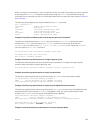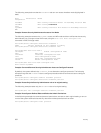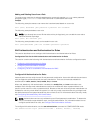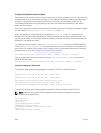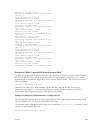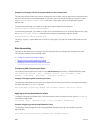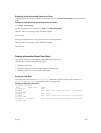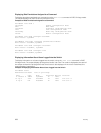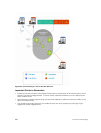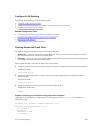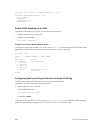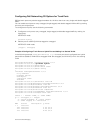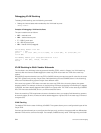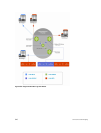44
Service Provider Bridging
Service provider bridging is supported on Dell Networking OS.
VLAN Stacking
VLAN stacking, also called Q-in-Q, is defined in IEEE 802.1ad — Provider Bridges, which is an amendment
to IEEE 802.1Q — Virtual Bridged Local Area Networks. It enables service providers to use 802.1Q
architecture to offer separate VLANs to customers with no coordination between customers, and
minimal coordination between customers and the provider.
Using only 802.1Q VLAN tagging all customers would have to use unique VLAN IDs to ensure that traffic
is segregated, and customers and the service provider would have to coordinate to ensure that traffic
mapped correctly across the provider network. Even under ideal conditions, customers and the provider
would still share the 4094 available VLANs.
Instead, 802.1ad allows service providers to add their own VLAN tag to frames traversing the provider
network. The provider can then differentiate customers even if they use the same VLAN ID, and providers
can map multiple customers to a single VLAN to overcome the 4094 VLAN limitation. Forwarding
decisions in the provider network are based on the provider VLAN tag only, so the provider can map
traffic through the core independently; the customer and provider only coordinate at the provider edge.
At the access point of a VLAN-stacking network, service providers add a VLAN tag, the S-Tag, to each
frame before the 802.1Q tag. From this point, the frame is double-tagged. The service provider uses the
S-Tag, to forward the frame traffic across its network. At the egress edge, the provider removes the S-
Tag, so that the customer receives the frame in its original condition, as shown in the following
illustration.
Service Provider Bridging
839



